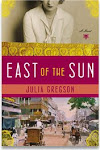
By David Farley
When I first heard about the Holy Foreskin, I thought—like a lot of people—it was a joke, either the title of a foreskin fetish magazine or something straight from the mind of a perverted Batman fan. I’d majored in history—focusing on the medieval and Renaissance periods in Europe—and I had a particular interest in the saints and their relics. Yet, in the research I’d done for papers as an undergraduate and grad student, this once-rapturous remain had never come up. Which intrigued me because once I started doing a bit of research—blew a bit of dust off the documents, so to speak—I found out there was a lot of relatively buried material about the history of Jesus’ foreskin.
After moving to the village of Calcata, 30 miles of Rome, the last place the Holy Foreskin had been seen, I wasn’t sure if broaching the topic of the missing relic would be taboo. But, much to my surprise, pretty much everyone wanted to share their knowledge on the history of the relic and their theories on what happened to it. Everyone except the priest, under whose watch it disappeared. (I eventually did get him to talk, but you’ll have to read the book to find out what happened.) Then I talked my way into the Vatican Library and, after enough digging around, unearthed some centuries-old papal-approved booklets about the history of this miraculous membrane. All the documents—complete with an impratur that stated papal approval—put the Calcata foreskin at the center of attention, but they always dedicated some discussion to the other Holy Foreskins that were floating around Europe (though mostly in France) during the Middle Ages (most of the other foreskin relics were lost during the Reformation and French Revolution).
But the publications on the relic abruptly stopped after the 19th century. The reason? In 1900, Pope Leo XIII issued a decree stating that anyone who spoke of or wrote about the relic would face excommunication. I was officially intrigued. How did a relic go from being a major pilgrim magnet to being banned by the church centuries later? Factor in the mysterious disappearance of the relic from Calcata in 1983 and we’ve got a genuine historical mystery on our hands.
David Farley is author of An Irreverent Curiosity: In Search of the Church's Strangest Relic in Italy's Oddest Town.To learn more about David and his book, visit www.dfarley.com
Image: Calcata, Holy Foreskin Niche, courtesy of the author





















